This post may contain affiliate links. Please read our disclosure policy.
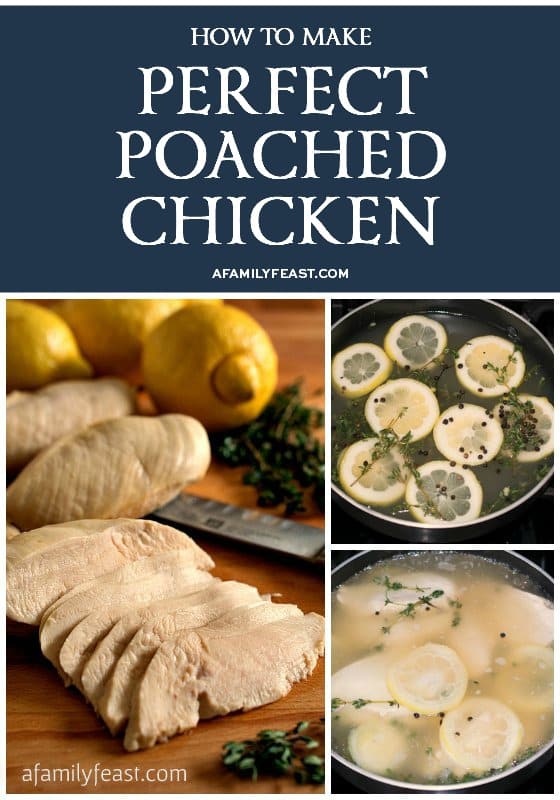
As part of today’s Cooking Lesson, we’re teaching you how to cook Perfect Poached Chicken! Poached chicken is versatile and easy – and something that every home chef should know how to make!
Poaching is simply defined as a cooking technique which involves submerging a food into a hot liquid to cook, and there is actually quite a bit of science to it! Poaching allows the proteins in chicken to ‘denature’ without pulling too much of the moisture out – and the result is some of the most tender and juicy chicken you will ever eat!
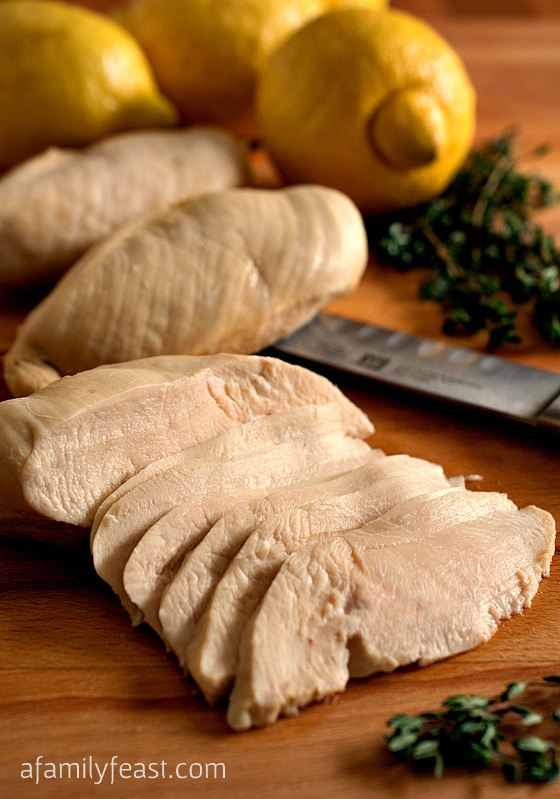
The poaching liquid is called a cuisson. The cuisson typically includes a broth plus the addition of an acidic ingredient (such as the lemon in our recipe, or wine or vinegar is also sometimes added) along with aromatics for flavor (such as herbs or vegetables).
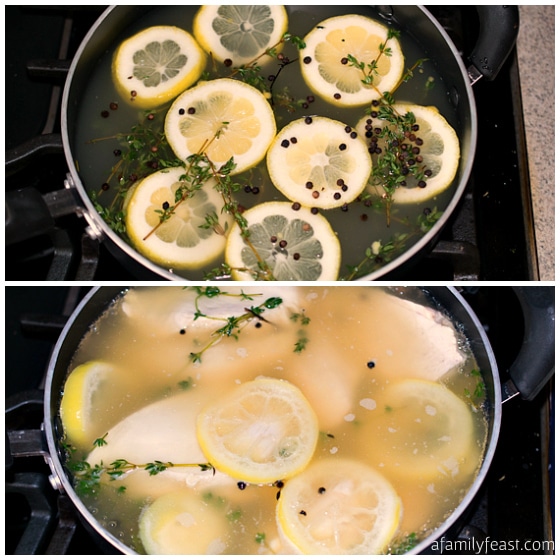
Poaching uses low heat to gently cook the chicken (around 160–185 degrees) – but you don’t want to boil the chicken in the poaching liquid! (It’s OK to boil the poaching liquid before adding the chicken, but once the chicken is added, do not allow it to boil again!) Our recipe below gives you some specific tips on how long to poach chicken breasts as well as chunks of chicken.
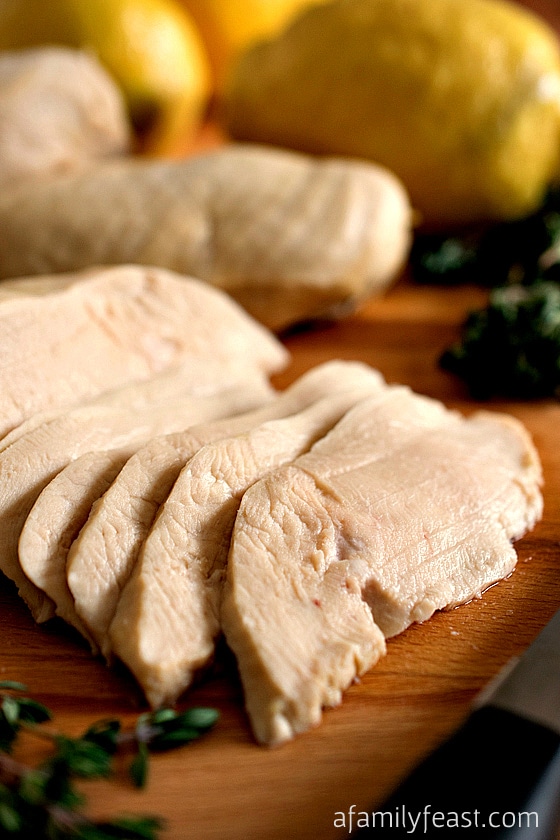
A few more last tips:
Remember that when you are poaching chicken, the poaching liquid you use will give it really great flavor – so please don’t just poach your chicken in plain water! While the recipe below is for a Lemon Poached Chicken (a delicious and versatile recipe), you can adapt this recipe with other flavors based on the dish you are preparing. For example – you could add in some Asian inspired flavors such as lemongrass or ginger for an Asian chicken salad. Or swap in some orange for the lemon for a different citrus flavor! The options are endless.
Poaching is the perfect cooking method for more than just chicken. Any delicate foods such as eggs, fish or fruit are delicious and tender when poached. (Click here for our Poached Pears in Red Wine recipe or our Poached Cod with Tarragon and Cherry Tomatoes as an example of other poached foods.)
Interested in more chicken recipes?
Click here for our 100+ Best Chicken Recipes.
We love seeing what you made! Tag us on Instagram at @afamilyfeast or hashtag #afamilyfeast so we can see your creations!
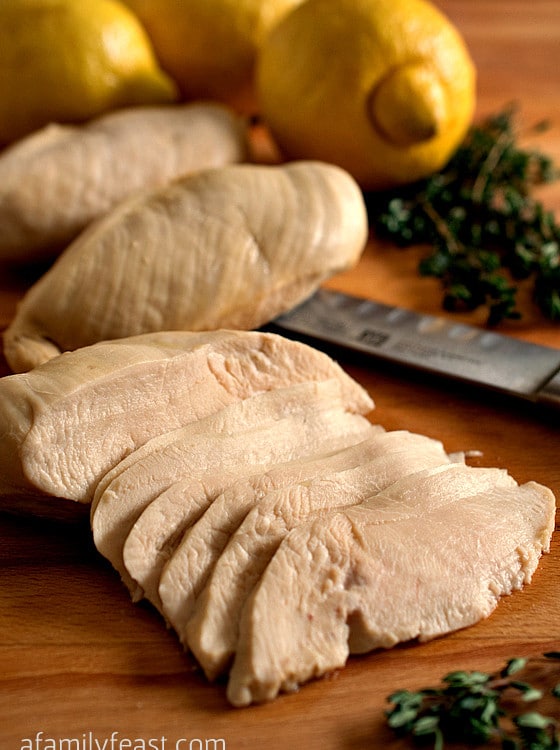
Perfect Poached Chicken
Recipe adapted from Fresh and Light
Ingredients
- 1 quart chicken stock
- 1 lemon sliced
- 4 sprigs fresh lemon thyme, or fresh plain thyme if lemon thyme is not available
- 1 teaspoon whole black peppercorns
- 4 6–ounce chicken breasts, trimmed of all visible fat
Instructions
- In a medium pan with high sides that has a tight fitting cover (ours was 9 ½ inches round and 2 ½ inches deep), place 1 quart of chicken stock, the sliced lemon, thyme and peppercorns. Bring to a boil uncovered. Place the chicken breasts in and set the timer for exactly three minutes from the time you add the chicken to the poaching liquid (do not allow the water to come back to a boil).
- After three minutes, remove from heat, cover and let the chicken sit in the poaching liquid for 8-10 minutes. The thickness of the breasts will determine the exact amount of time they sit in the hot liquid. After eight minutes, pull one out and test for doneness. (A little bit pink inside is OK, the chicken will cook further until it cools).
- Once just about cooked, remove to room temperature to cool. After they cool, they can be sliced or shredded depending on your recipe needs.
- The poaching liquid should be discarded.
Last Step! Please leave a review and rating letting us know how you liked this recipe! This helps our business thrive & continue providing free recipes.
Notes
This recipe will also work for chicken breasts that have been cut up into chunks. Place the chunks in the poaching liquid as above, bring the liquid temperature almost to a boil, cover and shut off heat. Let cut up chicken sit in poaching liquid for 5-10 minutes or until cooked through. The size of the chicken pieces will determine the time they sit in the hot poaching liquid. Large 2-3 inch size pieces will take the full ten minutes. Smaller 1-2 inch pieces will take about five minutes. Once they are done cooking, remove them from the liquid immediately to cool.
You may also like:
Poached Cod with Tarragon and Cherry Tomatoes
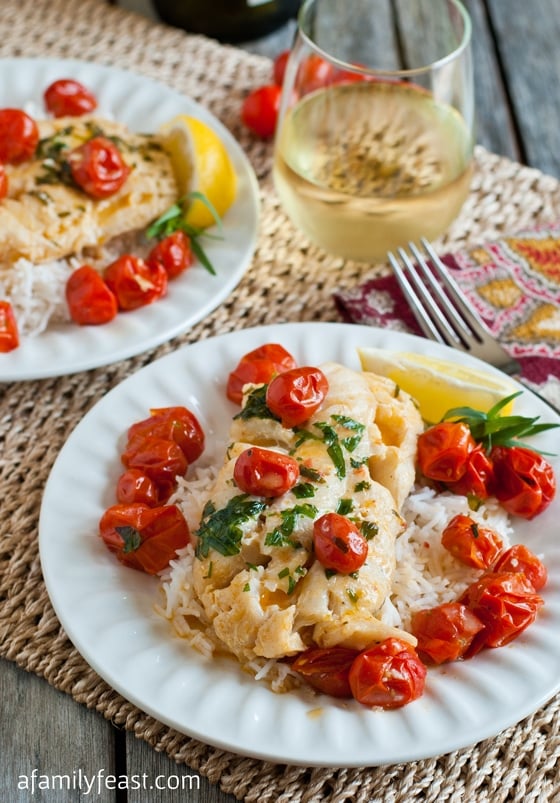
Poached Pears in Red Wine with Vanilla Custard Sauce
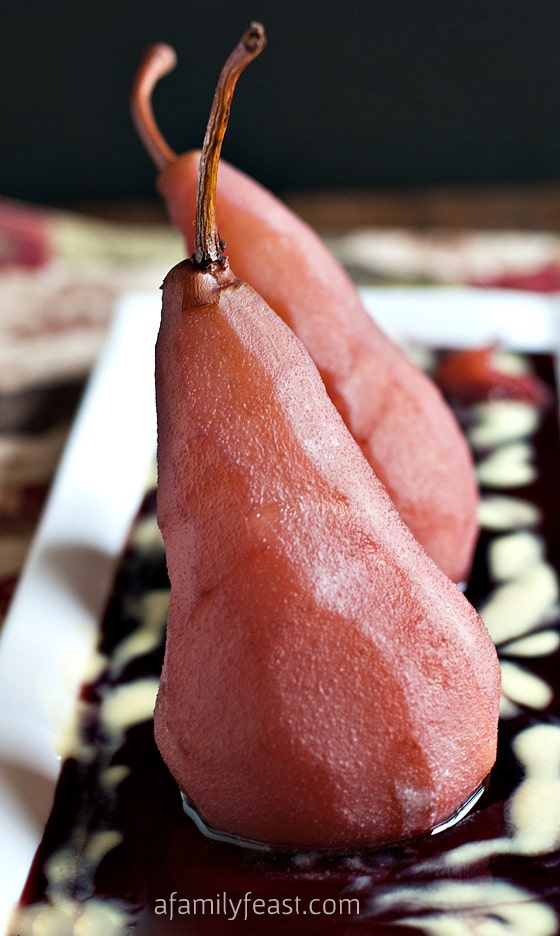
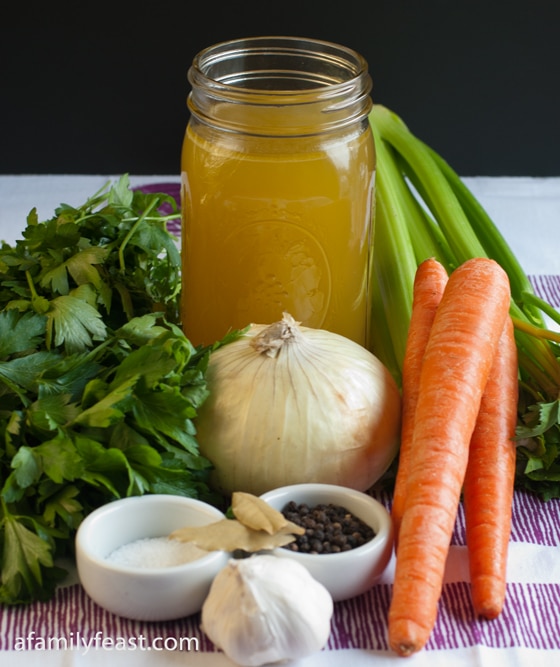
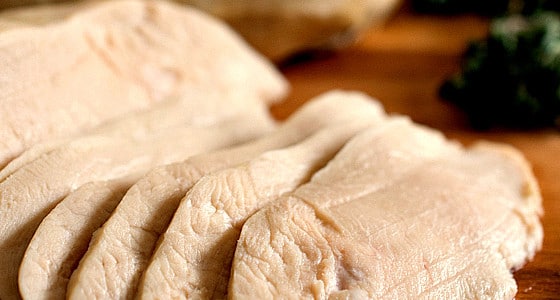
Why discard the poaching liquid? It could be used as chicken stock for soup, or frozen for gravy making.
Great idea Susan! With the lemon included in the poaching liquid, that may not lend itself to some soup or gravy recipes – but we certainly love the idea of not wasting the deliciously flavored liquid and using it in other recipes. Thanks for the suggestion!
I sometimes forget to thaw my chicken. How would you adjust the recipe for frozen chicken breasts? Thanks!
Hi Tina – In a pinch, you can poach the chicken in the same manner right from the frozen state – it just takes a little longer for the chicken to cook through. Ideally, however, you do want to thaw it because depending on the size of the breasts – the center could still be frozen while the outside is cooked, then by the time the center is cooked, the outside is overcooked and tough. When it is thawed before cooking, this is less likely to happen. Hope that helps!
I am cooking a high tea for about 80 in our womens’ group at church. How does this recipe adapt for larger amounts? Do you have a recipe for your ginger chicken salad mentioned in the above cooking lesson?
Hi Karen, this is Jack. Our original recipe would produce six 4-ounce portions which should be a good amount for a ladies tea, regardless of the recipe you use them in. For 80 women at a tea, I would buy 20 pounds of boneless chicken, which again would be 4 ounces for each person. The best way to cook this much would be to place a roasting pan on top of your stove over two burners and cook the chicken in batches. If it were me, I would fill the pan half full, add the other ingredients and just follow the steps in the recipe. As each batch cooks, refrigerate to chill while you work on the next batch. If too much liquid evaporates between batches, just top it off as you go. Our recipe calls for a quart of stock. To fill a roasting pan, I would estimate four quarts to start so multiple the remaining ingredients by four. The reference in the recipe to the ginger is simply that you can change up the poaching liquid flavor – adding fresh ginger or lemongrass – as another option. We do have two recipes on our blog that you could use the poached chicken in – each with different flavor profiles: https://www.afamilyfeast.com/vietnamese-chicken-and-cabbage-salad/ and https://www.afamilyfeast.com/asian-noodle-salad-chicken/ but feel free to use the chicken any way you wish. Once cooked, it is very versatile. Please let us know if you have any other questions.
I wondered why the poached chicken cooking liquid couldn’t be used for a future stock……….
Hi Dale! Great question! For this particular recipe – the poaching liquid is very lemony and peppery and we felt it was too strong to use for another recipe. But – if you wanted to use it (or another poaching flavor variation) for a stock, it is perfectly safe from a culinary standpoint to do so. Thanks for your question!
I had that same question in mind and thought it might make a nice lemon/pepper sauce for chicken or pork after cooking it down.
You can definitely try Jessica! Let us know if you come up with a recipe – we’d love to hear how you use it!